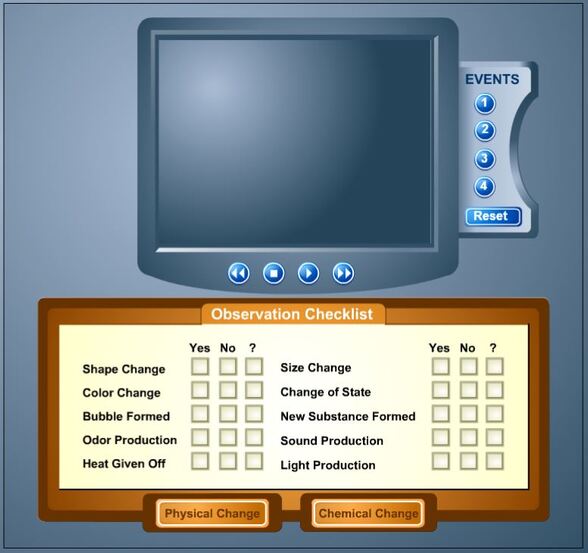Welcome back from Spring Break! This week, we are going to tackle chemical changes. Students in upper grades are asked to plan and carry out investigations to determine if a chemical change has occurred based on observable evidence (S5P1.c). Students are also asked to generate and analyze patterns- which is PERFECT for writing and deciphering secret messages (MGSE4.OA.5).
Materials you will need: paper, markers, lemon juice, baking soda, grape juice, milk, Q-tips, and a flame-less heat source like a hair dryer or a lamp without a lampshade.
Optional items: ingredients for baking cookies, bread, or any other baked good
We would normally begin with a video of a read aloud that's connected to our subject, but this one can be a little tricky! Here's a great short video clip that summarizes all you need to know about physical and chemical changes.
Materials you will need: paper, markers, lemon juice, baking soda, grape juice, milk, Q-tips, and a flame-less heat source like a hair dryer or a lamp without a lampshade.
Optional items: ingredients for baking cookies, bread, or any other baked good
We would normally begin with a video of a read aloud that's connected to our subject, but this one can be a little tricky! Here's a great short video clip that summarizes all you need to know about physical and chemical changes.
Here's an interactive game that will test your knowledge of physical and chemical changes. Give it a try! It will check your answers as you go along. Click the photo to visit the site. (Note: game requires Adobe Flash Player)
Here's an optional bonus activity - spend some time with a family member as you bake something together. When you bake, you are chemically changing the ingredients to become a tasty treat!
Once you feel confident that you can determine the difference and physical and chemical changes, it's time to take on your STEM challenge! Ask yourself, how can I use household items to try and create secret messages that can only be revealed with heat? Give your messages one additional level of security by creating an alphabetic code that uses patterns to write your messages. Brainstorm some ideas and do some materials testing. Which type of chemical works the best? Create your secret code and give it to a family member to decipher. Evaluate: Could I try another material or combination of liquids to get better results? Can you improve your messages?
If you're stuck on how to create your code, check out this video and try out the Pigpen Cipher!
Once you feel confident that you can determine the difference and physical and chemical changes, it's time to take on your STEM challenge! Ask yourself, how can I use household items to try and create secret messages that can only be revealed with heat? Give your messages one additional level of security by creating an alphabetic code that uses patterns to write your messages. Brainstorm some ideas and do some materials testing. Which type of chemical works the best? Create your secret code and give it to a family member to decipher. Evaluate: Could I try another material or combination of liquids to get better results? Can you improve your messages?
If you're stuck on how to create your code, check out this video and try out the Pigpen Cipher!



 RSS Feed
RSS Feed